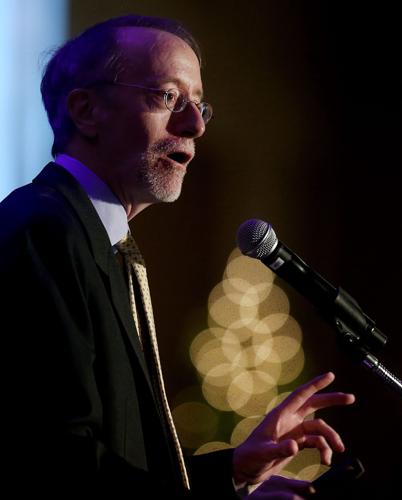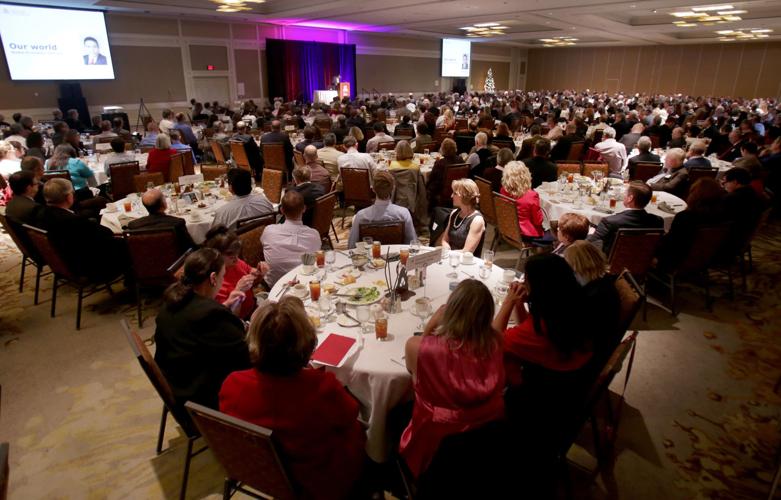Tucson’s economy is gaining steam, with faster growth predicted for the next two years, University of Arizona economists said Friday.
And the chief economist for banking giant Chase predicted the U.S. economy will grow at a faster rate in 2017, citing tax cuts, new infrastructure spending and a reduction in regulation promised by President-elect Donald Trump.
The Tucson metro area’s job growth is expected to be in the 2 percent range in 2017 and 2018, after posting an anemic 0.6 percent growth in 2015 and an expected 1.4 percent increase this year, said George Hammond, director of the UA’s Economic and Business Research Center.
“It’s basically a positive outlook,” Hammond told about 500 attendees at the Eller College of Management’s annual economic forecast luncheon at Westin La Paloma Resort. “I think we’re going to see Tucson’s economy pick up a little steam.”
Tucson job growth slowed unexpectedly in the third quarter but shows signs of a year-end rebound, he said.
Manufacturing jobs are expected to increase, reflecting the announcement of 2,000 new jobs coming at Raytheon Missile Systems over five years, and additions by companies including rocket-launch startup Vector Space Systems.
Most new jobs here during the next three years are expected to be in education and health services; leisure and hospitality; professional and business services; and trade, transportation, and utilities.
The UA forecast calls for modest job losses in natural resources and mining, reflecting low copper prices.
The projected growth rates are up from last year’s forecast and translate into 5,300 net new jobs this year, 7,100 in 2017, and 7,600 in 2018.
The UA economists upped their outlook for 2016 job growth earlier this year, from to 1.4 percent from 1 percent at last year’s forecast.
Hammond noted that Tucson’s over-the-year job growth through the first 10 months of the year accelerated to 0.9 percent in 2016, from just 0.5 percent in 2015.
Sectors adding the most jobs in the third quarter were education and health services; manufacturing; government; and trade, transportation and utilities.
A major concern both nationally and in Tucson is slow income growth, which constrains overall economic growth, Hammond said.
“We’re still really waiting for real wage growth to catch fire,” he said.
Hammond said the effect the successful state minimum-wage ballot proposition will have on hiring or wages remains unclear. The initiative will raise the minimum wage from $8.05 now to $10 next year and then gradually increase it to $12 by 2020
“It will tend to raise average wages per worker,” he said.
“But the bigger question is, what impact will it have on overall income growth,” he said, noting that if employers hire fewer workers that may offset higher wages.
Tucson suffered from federal budget-cutting after the recession because of its heavy concentration of government jobs, but the area should do better with that “fiscal drag” diminishing and promised new government spending in the works, Hammond said.
One area of recent concern, Hammond said, is the strength of the U.S. dollar, particularly against the Mexican peso.
From June through October of this year, the dollar was up about 45 percent versus the peso, then spiked again after the election.
Mexico is by far Arizona’s biggest international trading partner, accounting for about 40 percent of merchandise exports.
“That tends to put downward pressure on our merchandise exports, and we are starting to see that happen,” Hammond said, adding state exports of goods to Mexico and Canada are down about 10 percent this year while exports overall are down about 5 percent.
Chase economist Anthony Chan was generally upbeat about the U.S. and global economies, predicting that the U.S. economic and equity market outlook will remain bullish for 2017.
He predicts U.S. real gross domestic product growth of 2 percent in 2017 compared with growth of about 1.6 percent in 2016.
He said growth will be fueled by lower U.S. personal and corporate tax rates, increased infrastructure spending and a business-friendly 70 percent reduction in federal government regulations promised by President-elect Trump.
Chan noted that with inflation increasing, albeit slightly, the Federal Reserve is preparing to gradually raise short-term rates starting at its mid-December policy meeting next week.
“This should dampen price pressure further without unduly raising the risk of killing the current economic expansion,” Chan said.






